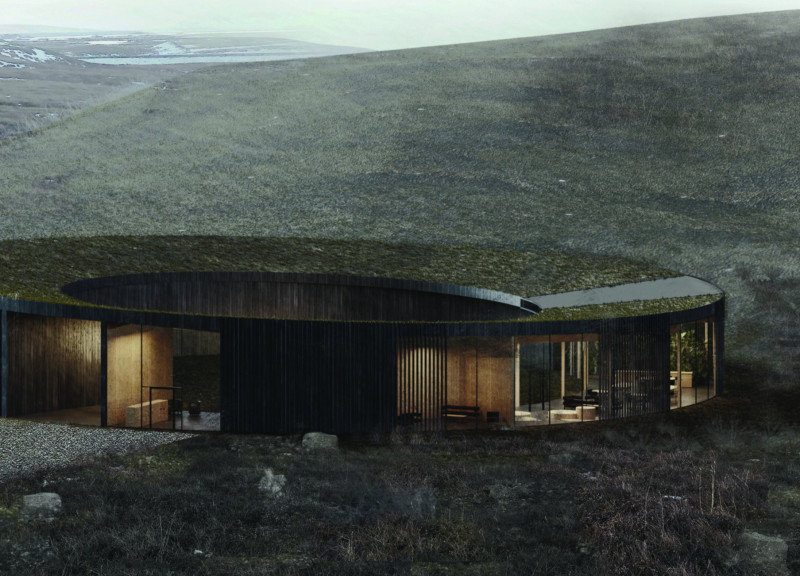5 key facts about this project
The Lake Mývatn Community Center is located in the picturesque landscape of Iceland. Designed to support both waste management and community activities, the center aims to foster interaction among people. Its circular shape connects the structure to the surrounding environment, making the design both practical and comforting for its users. The project highlights a commitment to functionality, ensuring that each space serves a specific purpose and enhances the overall experience of the occupants.
Design Concept
The central idea behind the design is that architecture provides shelter and fosters connection. The circular form of the center encourages inclusion while reflecting the organic shapes found in nature. This design approach helps create a sense of safety and warmth, inviting people to gather and engage with one another.
Spatial Organization
Inside the center, the layout is carefully arranged to accommodate various functions. It includes a greenhouse, social rooms complete with a kitchen, and facilities like showers and toilets for travelers. Ample storage areas, an information point, and a space for exhibitions further enhance the versatility of the center. This thoughtful design makes it a valuable resource for both local residents and visitors passing through the area.
Material Consideration
Sustainability plays a vital role in the center's construction. CO2-efficient timber is selected as the primary material, which supports environmental goals and aligns with modern building practices. The use of timber not only connects the center to its natural surroundings but also contributes to creating a warm and inviting atmosphere inside.
Design Integration
Large windows feature prominently throughout the building, allowing for generous amounts of natural light. These windows help to connect the interior spaces with the external landscape of Lake Mývatn. This connection emphasizes the beauty of the surrounding nature and enhances the comfort of those inside. Users can enjoy views of the landscape, reinforcing the relationship between the community center and its environment.





















































